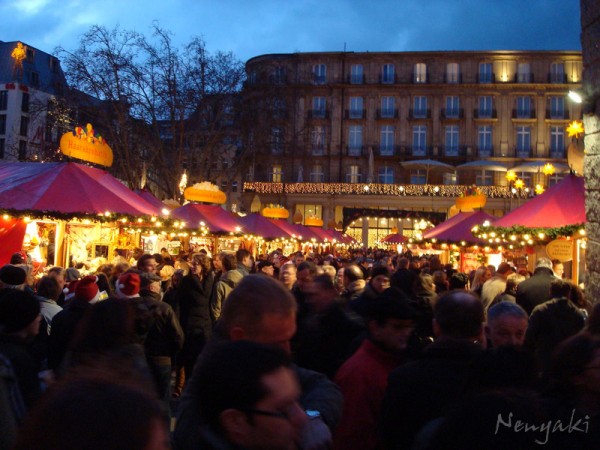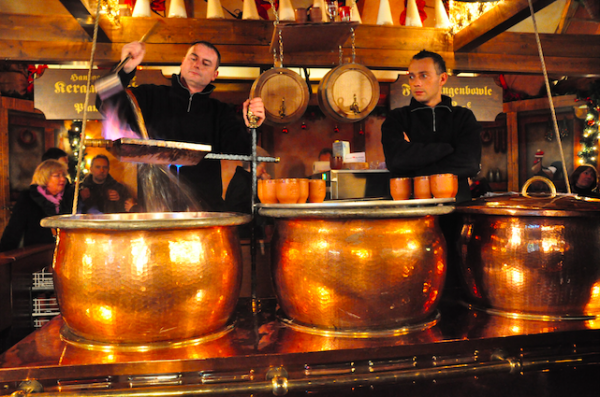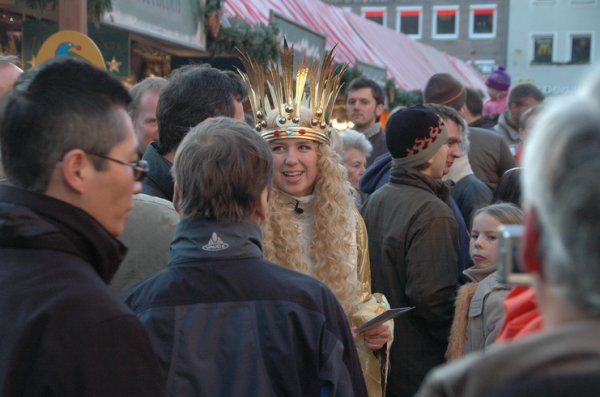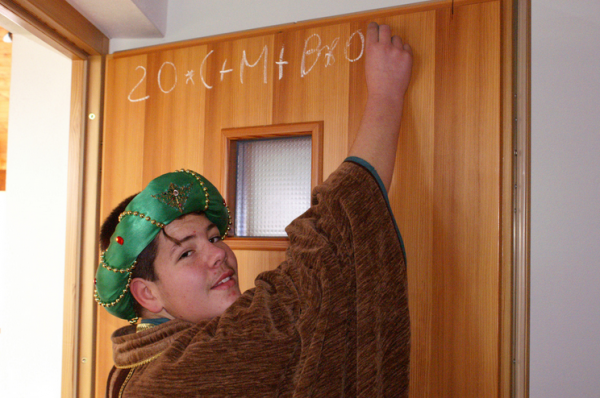4 Tips for Surviving A German Christmas Market
Posted on December 22nd, 2014by
In German | Leave a Comment »
Christmas time means Christmas markets, and Germany’s Weihnachtsmarkt is the best. You’ll find yourself wandering down newly made streets of little wooden stalls selling amazing handicrafts, useless souvenirs, homemade honey, homemade wine, homemade cakes… homemade everything! If you’re looking for a good souvenir or a uniquely made Christmas present, you won’t be disappointed. Make sure you come prepared though. We’ve made a list of tips and tricks to make sure you get the best experience possible. Fröhliche Weihnachten and happy Christmas market hunting!

Photo by Nenyaki/Flickr
Pack the right bag
You need a bag that isn’t too big but has plenty of pockets. Christmas markets are busy and crowded, and you’ll want to be able to store your purchases in multiple pockets to keep them separate from your phone and your cash. It’s important too, to make sure that your cash is in a place that’s hard for you to get to, which will mean it will be hard for pickpockets to get to as well. Don’t bring a backpack, as it will just hold you back in the crowds, and it’ll be difficult for you to get in and out of as you shop through the amazing handicrafts you’re bound to find.
Fingerless gloves are your new best friend
You need something that will keep your hands warm, but will still allow you to eat, pay for your purchases, drink your Gluhwein, and maybe check your phone without taking them off. I would recommend normal gloves with fingerless gloves on top, but only if you don’t plan on checking your phone all that often. Don’t wear mittens. They will simply get in the way of all the eating, drinking, purchasing and photo taking.

Photo by Roxnstix/Flickr
Find the best Gluhwein and make that HQ
Gluhwein is amazing. In English, it’s called mulled wine and it is the best part of any Christmas market. The first thing you’ll want to do when you get to a Christmas market is find the perfect mug of hot, fruity wine. Based on experience, you’ll want to look for the longest line, or people working the stall who look generally rushed off their feet – this is where you’ll find the best Gluhwein (or alternatively the best Wurst). Make this your HQ. If your group gets separated, you meet back there. Every lap that you do, you head back to that stand for a Gluhwein refill. You’ll thank yourself for making this your first priority, because the Gluhwein will help fight off the cold and stop you from buying as many things, as one hand will always be full!
Go on an empty stomach
Christmas markets are full of tasty, hearty, delicious foods. You’ll find multiple stalls offering amazing Wurst, Christstollen (amazing cake), Lebkuchen (yummy cookies), as well as different stews and baked goods. You can eat like a king and the smells will have your mouth watering and your tummy grumbling. Budget a little extra money for this part of the market. You won’t regret buying some tasty food here, and though it might be a bit pricy, your taste buds will thank you for it!
If you’re looking to go exploring the markets this Christmas time it’ll be handy to have a few phrases under your belt. Contact us today to find German courses and make the most of your trip!


